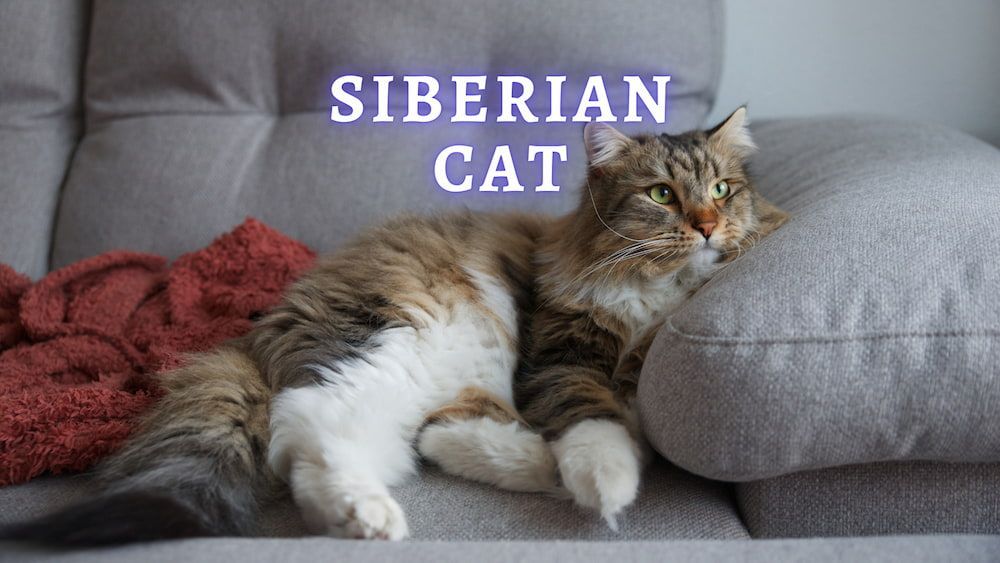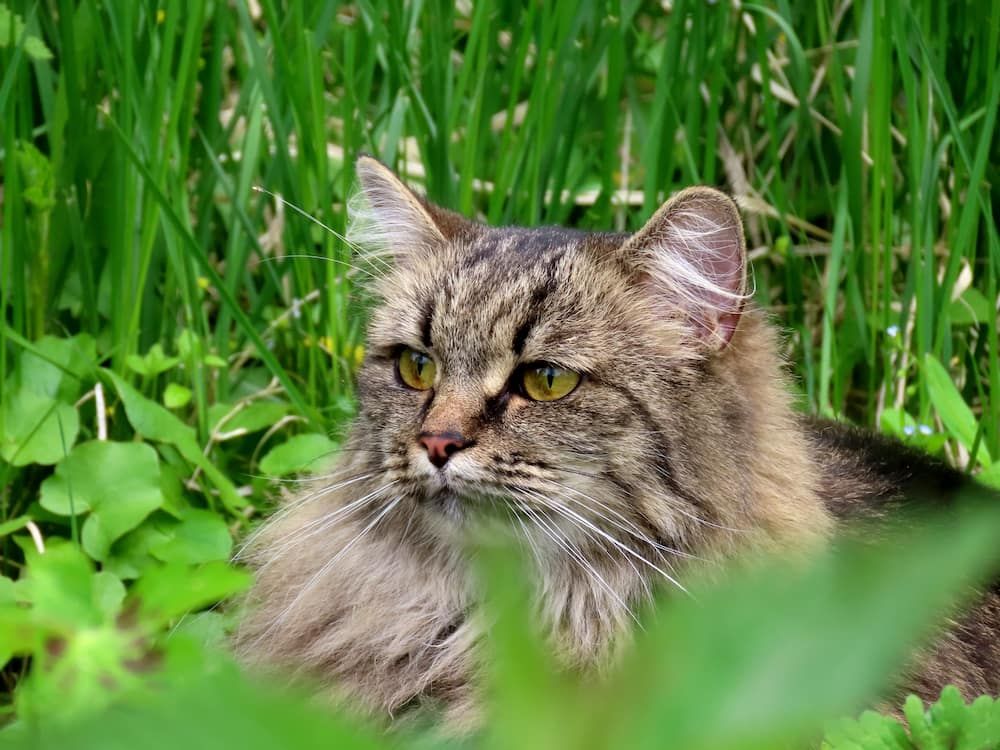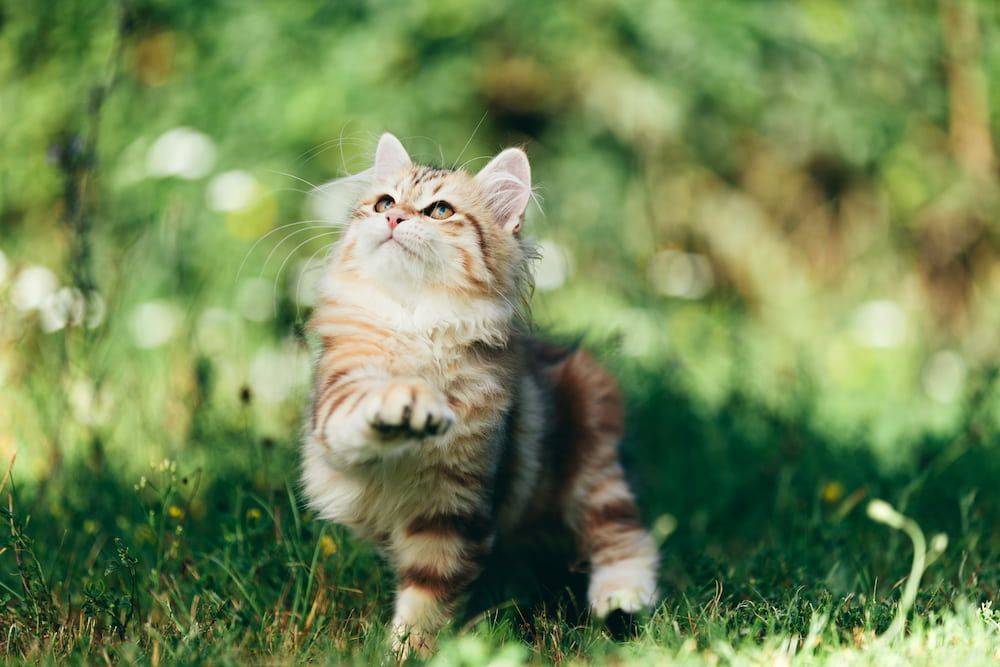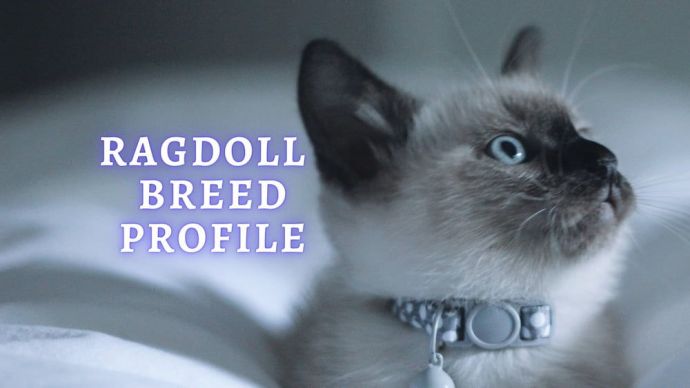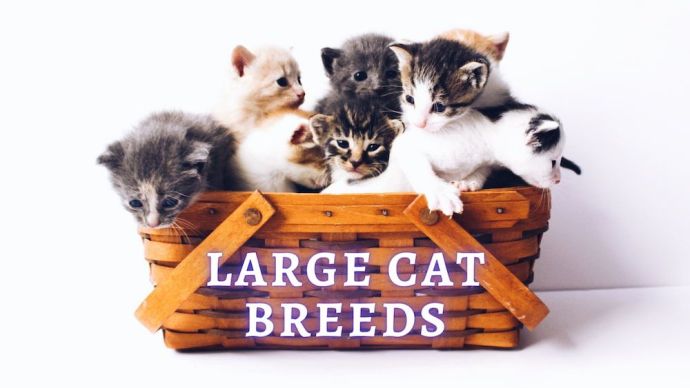Siberian Cat: Size, Price, Care and Personality of the Siberian Cat
Written by:
Author: Seb Jenkins
Seb is a professional SEO writer with a degree in Journalism, he has five years of experience in writing and editing. Seb specializes in topics like dog and cat breeds, aquarium guides, and pet care. He is passionate about educating and entertaining animal owners worldwide. In his spare time, Seb enjoys writing fiction novels.
View all 83 articlesLearn about our editorial process and veterinary review board.
Viewed: 98
Updated on: 06/08/2023
If you are looking for a playful and energetic four-legged friend around the home, look no further than the Siberian forest cat. These medium to large, long-haired felines are beautiful and loving pets and welcome to any family.
It is no surprise that you are researching Siberian forest cats over other breeds as the next possible addition to your family. Fortunately, we have compiled an all-you-need-to-know guide right here.
The following are the main characteristics shown by the Siberians:
| Characteristic | Description |
| Height | 9-11 inches |
| Weight | 15-26 pounds |
| Lifespan | 12-15 years |
| Colors | Black, brown, chocolate, lavender, cinnamon, silver, cream, tan, red, white, blue, orange, lilac, fawn with any pattern |
| Group | Medium/large long-haired cat |
| Temperament | Affectionate, playful, and full of energy |
| Social skills | Good with people |
| People skills | Friendly and playful |
| Children | Good with children |
Breed History
The Siberian cat first came about naturally, although selective breeders have refined the breed through the years. Although their exact date of origin is unknown, we know that the Siberian cat comes from Russia and is at least hundreds of years old, maybe even over 1000. Some experts claim the Siberian cat may have led to the creation of the standard domestic long-haired feline. They remain a beloved part of Russian culture and have a permanent place in the country’s folklore. Some stories claim that Siberian cats would protect homes and guide people’s souls to the underworld after death.
It is said that when building a new home, a Siberian cat should be the first to enter, and wherever they lie down is the optimum location for your bed. However, even though it has a long history in Russia, the Siberian cat was only recently added to some of the biggest registries in the Western world.
The Kotofei Cat Club added the Siberian breed to its list in 1987, and they first appeared in the US three years later following an import from Elizabeth Terrel. In 1992, the Siberian breed was accepted by the International Cat Association and was granted championship status four years later. Although it is still quite a rare breed beyond the Russian borders, the Siberian cat is growing in popularity worldwide, so you certainly aren’t alone in your interest.
Fun Facts
- The Siberian cat is also often referred to as the Moscow Semi-Longhair.
- These cats can grow petty big, with some even reaching 26 pounds.
- The Siberian cat’s saliva doesn’t contain much Fel D1, which is why it is often called hypoallergenic – rare for a cat breed.
Temperament and Personality
The Siberian cat is such a playful and affectionate little friend to have around the house, and they stay that way for most of their life, maturing at a pretty slow rate. Some Siberians don’t reach full adulthood until they are five! However, they are still very relaxed and calm pets to take on, with minimal chirps and purrs to communicate their love for you. They also get along with whatever person or other animals put in front of them. They love an athletic challenge, so giving them plenty of stuff to climb on is a great idea. But they are equally at home having a cuddle on your lap.
| Category | Rating (out of 5) |
| Affectionate with family | 4 |
| Shedding | 4 |
| Health | 4 |
| Playfulness | 4 |
| Vocal | 2 |
| Kid-friendly | 4 |
| Stranger-friendly | 3 |
| Easy to groom | 2 |
| Pet-friendly | 4 |
| Intelligence | 4 |
Feeding and Diet
Fortunately, the Siberian cat has no complicated or unique diet requirements, making them quite an easy pet to cater to. However, we still have recommendations to ensure their quality of life is as high as possible. Cat food with extra Omega fatty acids will maintain your Siberian cat’s healthy coat and skin. Choosing food that is low in carbohydrates and high in protein is also an excellent way to promote good general health. It is also always a good idea to purchase food targeted toward your cat’s age range to ensure they are getting all the stuff they need to remain healthy. You should also cater the portion size to the size of your Siberian cat and their energy levels – to avoid them becoming overweight or malnourished.
RELATED: The 15 Best Wet Cat Food (Vet Approved Review)
Grooming and Shedding
The Siberians are known for their warm, thick, triple coat, often needed in their native Russia. The coat includes external, long guard hairs, the second layer of awn hair, and then a third coat of short, downy hair. Even though it has three layers to its name, they don’t often suffer from tangled hair. However, you will still need to brush regularly in the summer, as Siberian cats shed those layers away to keep cool. The Siberian cat has a lot of energy and loves to play around, so it’s always a good idea to trim its claws to avoid damage to your home and yourself.
Regular vet check-ups are necessary with any animal, no matter their track record of health. One thing to look out for, which is standard with many cats, is signs of dirt building up in the ears, which can lead to a possible infection. You could also converse with your vet about a tooth-brushing plan for your Siberian. Our general advice would be to always be on the lookout for changes in their behavior or any signs of pain/distress.
Health Problems
Fortunately, the Siberian cat is usually a very healthy specimen. The main things to look out for are a risk of hypertrophic cardiomyopathy and lower urinary tract disease. You should always get a health guarantee from any breeder, but there are, of course, health issues associated with all breeds, and just cats in general. As with any pet, we recommend regular health check-ups with your vet to keep an eye on any health conditions.
Exercise
Although the Siberian cats may look a little cumbersome due to their triple coat, they are real athletes under the surface. These kitties have bundles of energy and athleticism, so it’s always nice to give them the tools to show that off around the home. We recommend cat towers, cat condos, and any climbing furniture you feel like attaching to the walls. These cats will run, jump, and climb all day long. They also love to be mentally stimulated with interactive toys and puzzles, so those are always good investments to keep them busy.
Scratching posts are also perfect for your Siberian to keep their own nails trim, to an extent. As a kitten and a young adult cat, your Siberian will lead the way when it comes to playtime. However, as they get older, they may need more encouragement from you. Obesity is a common problem in older Siberians, but a gentle nudge in the right direction usually keeps them on track.
Adoption
Of course, we always recommend giving a home to a cat who needs one rather than purchasing a Siberian kitten. All you need to do is research your local shelters and adoption facilities to see whether they currently house any Siberians. You should always ask about their history so you are fully aware of why they are in the shelter, though. It’s always good to have the information upfront. But there really is nothing better than welcoming a feline in need into your home.
Breeders
This is your best chance of finding a Siberian local to you. Some simple research into your local area should reveal some Siberian breeder options to you. Always select a breeder who has good reviews to ensure that you are actually getting a healthy Siberian kitten rather than something else.
Conclusion
And there we have it, everything you need to know about the Siberian cat breed. They truly are a joy to have around the family home and will be a welcome addition to your group. If you have any further questions, feel free to get in touch or post a message in the comments section below. We wish you all the luck with your new pet.
FAQs:
What is special about Siberian cats?
The Siberians is very athletic, playful, energetic, loving, and affectionate, the perfect feline friend to have around the home. They are also pretty big kitties and can grow to 26 pounds. Their saliva doesn’t contain much Fel D1, which is why it is often called hypoallergenic – this is rare for a cat breed.
What is the average cost for a Siberian cat?
Siberian cats usually cost between $1000 and $2000 in total.
Are Siberian cats cuddly?
Siberian cats are very playful and affectionate, so you shouldn’t have too much trouble getting a cuddle from them.
Can Siberian cats be house cats?
Siberian cats are more than happy being house cats as long as there is enough to keep them physically and mentally stimulated throughout the day. They should also have access to the outdoor world in order to promote healthy living and good mental health. You can purchase catios for this purpose.
 Cat Breeds Cats That Look Like Leopards: 10 Cat Breeds That Look Exactly Like Leopards
Cat Breeds Cats That Look Like Leopards: 10 Cat Breeds That Look Exactly Like Leopards - 533
- 0
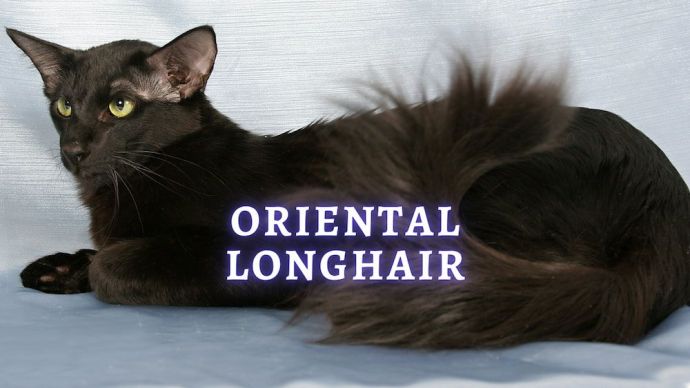 Cat Breeds Oriental Longhair: Oriental Longhair Cat Breed History, Temperament and Personality
Cat Breeds Oriental Longhair: Oriental Longhair Cat Breed History, Temperament and Personality - 532
- 0
 Cat Care Why Does My Cat Attack My Legs? 10 Reasons Why and What To Do About It (Vet-Approved Advice)
Cat Care Why Does My Cat Attack My Legs? 10 Reasons Why and What To Do About It (Vet-Approved Advice) - 45879
- 21
 Cat Veterinary Tips Cat Stomach Gurgling: Vet Advice on Why is Your Cat Stomach Gurgling?
Cat Veterinary Tips Cat Stomach Gurgling: Vet Advice on Why is Your Cat Stomach Gurgling? - 36204
- 4
 Cat Veterinary Tips My Cat Lost its Voice: Can Cats get Laryngitis? (Vet Advice)
Cat Veterinary Tips My Cat Lost its Voice: Can Cats get Laryngitis? (Vet Advice) - 23498
- 13









